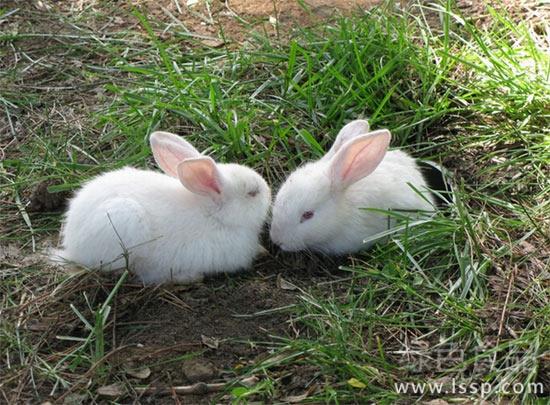Fine breeding of chickens in autumn
Autumn is the first stage of spring, and the flock management in this period is related to the economic benefits of chicken farms (households). Therefore, the following management measures should be taken for laying hens:
Changing the transition material in time generally changes the egg feed for 20-week-old chickens, also known as transition material, in which calcium is 1% and crude protein is 16.5%. When refueling, the application of half a month to gradually complete the refueling process, do not be too hasty, in order to prevent diarrhea. When the laying rate reaches 2%-3.5%, the feed should contain 3.4%-3.5% calcium and 18% crude protein.
In order to control the initial birth weight, while changing the feed and supplementing calcium, we should pay attention to the uniformity of population development, raise large, medium and small reserve hens in groups and adjust them regularly. Do not sharply increase or reduce the material, its benefits can only be shown after 3 weeks, should not be acted in haste. The feeding amount of light-weight chickens should not exceed that of medium-sized chickens, so as not to affect sexual maturity due to fat deposition.
The optimum laying temperature of laying hens is 18 ℃ ~ 23 ℃. When the external temperature is lower than 18 ℃, the nutrition needed for maintenance will increase; when the temperature is lower than 13 ℃, it will affect the growth, development and egg production of laying hens, so when the temperature of the henhouse is too low and the feed is not increased in time, the production of hens will be delayed due to lack of energy. When the temperature is high in summer and autumn, the feed intake of laying hens decreases. If the proportion of protein in the diet is not increased in time, the development of the reproductive system will be affected and the production will be delayed.
The relative humidity of the chicken house required for humidity regulation and ventilation is 55% 65%. The relative humidity of the 1-3-day-old chicken house is 70%. After 4 weeks of age, the relative humidity can be reduced to about 50%. The humidity should not be too high, otherwise the chicks will have filthy feathers, loss of appetite, weak and sickly, and so on, thus delaying sexual maturity and postponing the start of production. If the ventilation is poor, the harmful gases in the air will increase, the humidity will increase, and the oxygen content will decrease, which will make the reserve hens underdevelop and delay the birth.
Light control and adjustment reserve hens generally enter the stage of sexual maturity at the age of 15 weeks, and the natural light in this period is gradually shortened. If the illumination time is short, the time to reach sexual maturity is long, so we should start to supplement light after 15 weeks of age to meet the needs of sexual maturity of chickens. Generally speaking, the illumination time after 15 weeks of age should be maintained at the light hours of 15 weeks of age, but the light should not be too strong to prevent the occurrence of feather pecking, toe pecking, back pecking and other bad habits of chickens. The light time of laying hens is 13-17 hours a day.
Supplying enough clean drinking water is very important for first-time hens. Generally, a hen needs 100 to 200 grams of water every day. Therefore, laying hens should not be short of water every day. It is best to use a mobile flume to supply water, and brine can be supplied 2 to 3 times a week to improve the physique of laying hens and increase feed intake. You can also feed some carrots or green feed every day to improve the quality of eggs.
- Prev

Key points of feeding and management of young rabbits with weak physique, poor disease resistance and easy to die
Key points of feeding and management of young rabbits with weak physique, poor disease resistance and easy to die
- Next

demodiciasis
This disease is caused by the pig Demodex parasitism in the sebaceous glands and hair follicles of pigs caused by skin parasites, also known as lipid mites disease or hair follicle disease. The disease first occurs around the eyes, nose and ear base, and then spreads to other parts; white nodules of needle tip, rice grain or even walnut size can be seen in the affected part, abscesses are formed when bacterial infection occurs, sometimes the skin of sick pigs is thickened, unclean, uneven and covered with dander, and wrinkles occur. [Formulation 1] Ivermectin or avermectin, administered at 0.3 mg/kg body weight, once subcutaneously injected into the neck.
Related
- On the eggshell is a badge full of pride. British Poultry Egg Market and Consumer observation
- British study: 72% of Britons are willing to buy native eggs raised by insects
- Guidelines for friendly egg production revised the increase of space in chicken sheds can not be forced to change feathers and lay eggs.
- Risk of delay in customs clearance Australia suspends lobster exports to China
- Pig semen-the Vector of virus Transmission (4)
- Pig semen-the Vector of virus Transmission (3)
- Five common causes of difficult control of classical swine fever in clinic and their countermeasures
- Foot-and-mouth disease is the most effective way to prevent it!
- PED is the number one killer of piglets and has to be guarded against in autumn and winter.
- What is "yellow fat pig"? Have you ever heard the pig collector talk about "yellow fat pig"?

